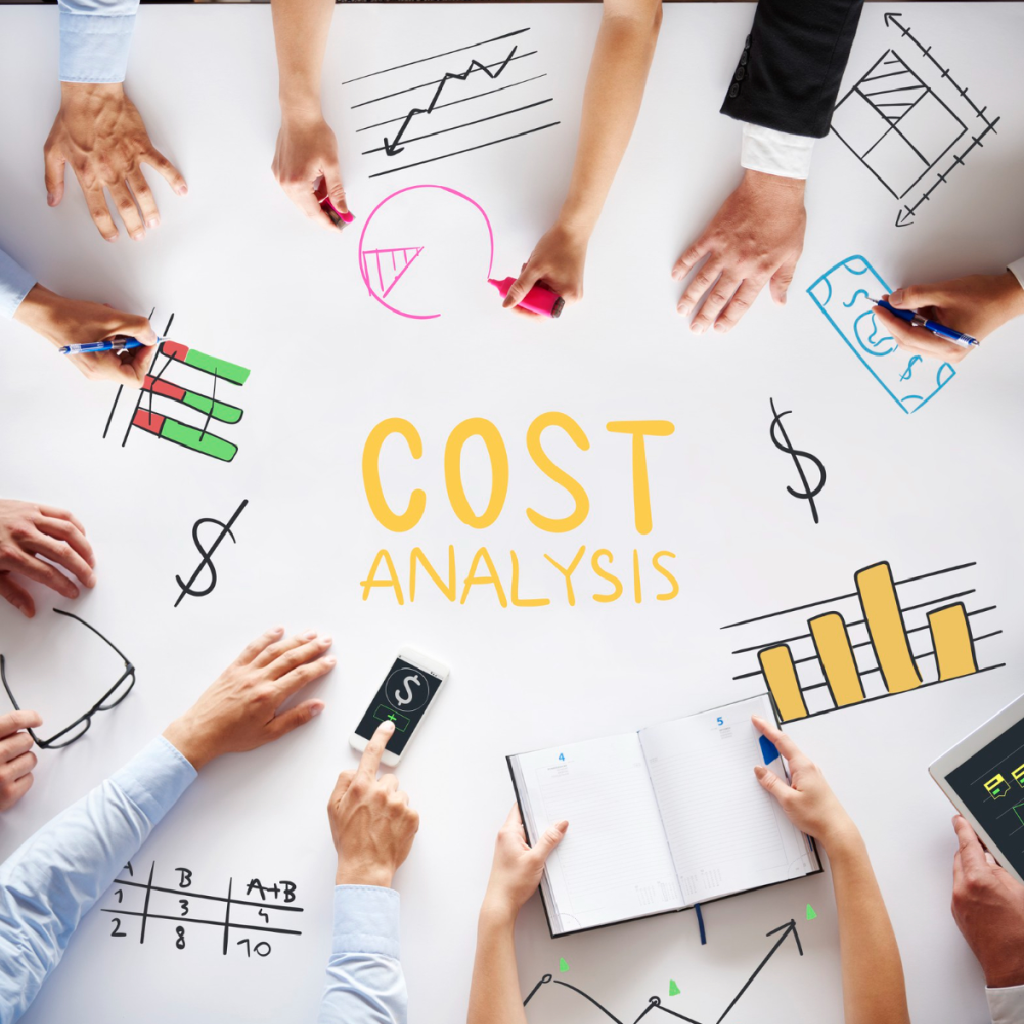In the ever-evolving world of digital advertising, it’s essential to have a solid grasp of Cost Per Mille (CPM) and how it impacts your business. You might be wondering, what exactly is CPM? How does it fit into the grand scheme of digital marketing? And most importantly, how can you optimize your CPM strategy to maximize its value? Don’t worry, we’ve got all the answers right here!

What is Cost Per Mille (CPM)?
Let’s start with the basics. CPM, also known as Cost Per Thousand, refers to the cost that advertisers pay for every thousand impressions of their ad. In other words, it’s the price you pay to get your message in front of one thousand sets of eyeballs. Think of it as your virtual billboard rate card, but instead of charging per day or month, you’re charged per thousand impressions.
Now, you might be wondering why it’s called “Cost Per Mille” instead of “Cost Per Thousand.” Well, it’s because Mille is Latin for thousand. And let’s face it, using Latin just makes everything sound classier.
The Basics of CPM
CPM is a pricing model commonly used in online advertising. It’s an effective way for advertisers to determine the cost of their campaign based on the number of impressions it generates. By setting a CPM rate, advertisers can control their budget and tailor their campaign to reach a specific audience.
For example, if you set your CPM rate at $10, every time your ad is displayed a thousand times, you’ll be charged $10. This means that for every thousand impression, you’re paying $10, regardless of the number of clicks or conversions your ad generates. It’s a cost-effective way to build brand awareness and get your message seen by a large audience.
CPM vs. Other Advertising Metrics
CPM is just one of many metrics used in the world of advertising. Understanding how it stacks up against other metrics will help you make informed decisions for your business.
One common metric you’ll come across is CPC (Cost Per Click), which measures how much you pay for each click on your ad. While CPC is great for campaigns focused on driving traffic to your website, CPM is more suitable when your goal is to create brand awareness or reach a wider audience.
Another popular metric is CPA (Cost Per Acquisition), which tracks the cost of acquiring a customer. CPA is ideal for campaigns focused on driving conversions and sales. However, CPM can still play a role in these campaigns by helping to build brand familiarity, which can ultimately lead to more conversions and lower CPA in the long run.
So, while CPM may not be the perfect fit for every advertising goal, it certainly has its place in the digital marketing toolbox.
Now, let’s dive a bit deeper into the world of CPM and explore some additional factors that can impact its effectiveness.
One important consideration is the quality of the impressions. While CPM measures the cost per thousand impressions, not all impressions are created equal. Advertisers need to ensure that their ads are being displayed in relevant and high-quality environments to maximize their impact. For example, if you’re advertising a luxury brand, you’ll want your ads to appear on premium websites that attract affluent audiences.
Another factor to consider is the ad format. CPM can apply to various types of ads, including display ads, video ads, and native ads. Each format has its own strengths and weaknesses, and advertisers need to choose the format that best aligns with their campaign goals and target audience. For example, video ads can be highly engaging and effective at capturing attention, but they may also have higher production costs compared to static display ads.
Furthermore, CPM can vary significantly depending on the industry and the specific advertising platform used. Different industries have different levels of competition, which can drive up or drive down CPM rates. Additionally, different platforms may have different targeting capabilities and audience reach, which can also impact the cost. It’s important for advertisers to research and compare CPM rates across different platforms to ensure they are getting the best value for their investment.
Lastly, it’s worth mentioning that CPM is not the only pricing model available to advertisers. There are other models like Cost Per Engagement (CPE) and Cost Per View (CPV) that may be more suitable for certain types of campaigns. Advertisers should consider their specific goals, target audience, and budget when choosing the right pricing model for their advertising efforts.
In conclusion, CPM is a widely used pricing model in online advertising that allows advertisers to control their budget and reach a specific audience. While it may not be the perfect fit for every advertising goal, it offers a cost-effective way to build brand awareness and reach a large audience. By understanding the basics of CPM and considering additional factors that can impact its effectiveness, advertisers can make informed decisions and optimize their advertising campaigns for success.
The Role of CPM in Digital Marketing
Now that you have a solid understanding of what CPM is, let’s dive into how it fits into the broader landscape of digital marketing.
How CPM Works in Online Advertising
In the world of online advertising, CPM is the go-to pricing model for display ads. Display ads are those eye-catching banners you see on websites, apps, and social media platforms. They’re designed to grab your attention and create brand awareness.
With CPM, you’re essentially buying impressions. Whether someone clicks on your ad or not, you’re still paying for the opportunity to get your brand in front of a potential customer. This makes it a powerful tool for building brand recognition and increasing your online presence.
The Importance of CPM in Social Media Marketing
When it comes to social media marketing, CPM is a key metric that can help you measure the success of your campaigns. Social media platforms like Facebook and Instagram offer robust targeting options, allowing you to reach your ideal audience based on demographics, interests, and behaviors.
By leveraging CPM on these platforms, you can effectively control your spending while maximizing the visibility of your ads. Plus, with the extensive tracking and analytics provided by social media platforms, you can easily monitor the performance of your campaigns and make data-driven decisions to optimize your strategy.
How CPM Impacts Your Business
Now that you understand how CPM works in the world of digital marketing, let’s explore how it directly impacts your business.
The Financial Implications of CPM
One of the most significant impacts of CPM on your business is the financial aspect. As with any advertising expense, it’s crucial to consider the return on investment (ROI) when evaluating the effectiveness of your CPM campaigns. By tracking and analyzing your CPM results, you can identify areas for improvement and ensure you’re getting the most bang for your advertising buck.
Additionally, CPM can affect your budget allocation. When planning your digital marketing strategy, it’s important to take into account the CPM rates for different advertising channels. Some platforms may have higher CPM rates than others, making it crucial to find the right balance between cost and reach for your specific target audience.
CPM and Audience Reach
Another significant impact of CPM is its ability to help you reach a broader audience. By choosing the right targeting options and using strategic placements, you can ensure your ads are seen by the right people at the right time. Whether you’re looking to capture the attention of a niche market or expand your brand’s reach to a wider audience, CPM can help you achieve your goals.
Remember, CPM isn’t just about impressions. It’s about getting your message in front of potential customers and creating brand awareness. The more impressions you generate, the higher the chance that someone will remember your brand when they’re ready to make a purchase.
Optimizing Your CPM Strategy
Now that you have a solid understanding of CPM and its impact on your business, it’s time to optimize your CPM strategy to ensure you’re getting the most value out of every impression.
Tips for Maximizing CPM Value
Here are a few tips to help you make the most of your CPM campaign:
- Target the Right Audience: Take advantage of the targeting options offered by advertising platforms to ensure your ads are reaching the people who are most likely to be interested in your product or service.
- Create Engaging Ads: Make sure your ads are visually appealing and compelling enough to capture your audience’s attention. Use eye-catching images, concise copy, and a clear call-to-action to encourage clicks and conversions.
- Test, Analyze, and Optimize: Continuously monitor the performance of your CPM campaigns. Test different ad creatives, placements, and targeting options. Analyze the data and make data-driven decisions to optimize your strategy for better results.
Avoiding Common CPM Mistakes
While CPM can be a powerful tool in your digital marketing arsenal, it’s essential to avoid common pitfalls that can undermine your efforts. Here are a few mistakes to watch out for:
- Overlooking Ad Frequency: Be mindful of how often your ads are being shown to the same audience. Seeing the same ad too frequently can lead to ad fatigue and diminishing returns.
- Neglecting Ad Placement: Different ad placements can yield varying levels of engagement and conversion rates. Experiment with different placements to find the ones that work best for your target audience.
- Ignoring Analytics: Don’t forget to regularly analyze the data provided by advertising platforms. Look for trends, identify areas for improvement, and make data-driven decisions to optimize your CPM strategy.
The Future of CPM
As with any aspect of digital marketing, CPM is constantly evolving. To stay ahead of the game, it’s essential to keep an eye on emerging trends and adapt your business accordingly.

Predicted Trends in CPM
Here are a few trends to watch out for in the world of CPM:
- Increased Personalization: With advancements in targeting technology, CPM campaigns will become more personalized, allowing advertisers to deliver highly relevant and customized ads to their audience.
- Integration with Artificial Intelligence (AI): AI-powered algorithms will help automate campaign optimization, making it easier for businesses to maximize the value of their CPM campaigns without extensive manual intervention.
- Rise of Connected TV and OTT Advertising: As streaming services continue to gain popularity, CPM campaigns on connected TV and over-the-top (OTT) platforms will become more prevalent, providing new opportunities for businesses to reach their target audience.
Adapting Your Business to Changes in CPM
To stay ahead of the curve, it’s important to adapt your business to changes in the CPM landscape. Embrace new technologies, keep an eye on industry trends, and continuously refine your strategy to ensure your CPM campaigns remain effective and yield positive results.
So there you have it, a comprehensive guide to understanding Cost Per Mille (CPM) and how it impacts your business. Armed with this knowledge, you can confidently navigate the world of digital advertising and utilize CPM as a powerful tool to build brand awareness, reach your target audience, and drive business growth. Happy advertising!





